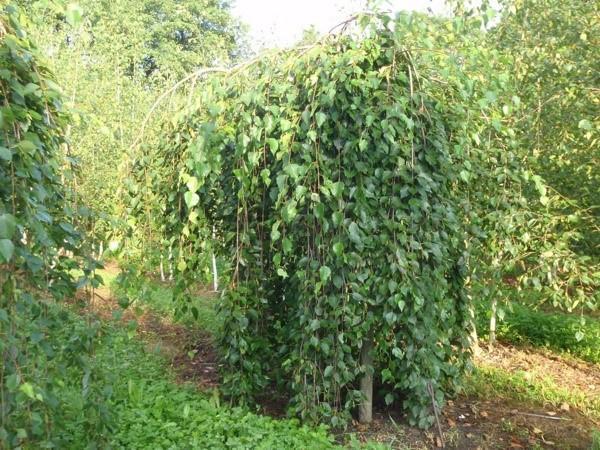Garden Decoration - Long Trunk White Birch
 A graceful weeping crown, a black and white trunk, emerald foliage and beautiful earrings - how can you not recognize a birch? This tree grows not only in natural conditions, but is also often used in landscape design for landscaping parks and private areas. One of the most beautiful types of culture is the useful Long Trunk birch. What is this tree, how it differs from other varieties and what growing conditions it prefers - this is what we are talking about today.
A graceful weeping crown, a black and white trunk, emerald foliage and beautiful earrings - how can you not recognize a birch? This tree grows not only in natural conditions, but is also often used in landscape design for landscaping parks and private areas. One of the most beautiful types of culture is the useful Long Trunk birch. What is this tree, how it differs from other varieties and what growing conditions it prefers - this is what we are talking about today.
Under natural conditions, the variety grows in the mountainous regions of the Himalayas, for which the birch is also called the Himalayan.
Description of the species
Useful Long Trunk birch can have a variety of sizes - the height of the tree varies from 5 to 10 m, while the crown can grow up to 5 m in diameter. One of the characteristic features of the variety, by which it is easy to distinguish it, include:
- graceful weeping umbrella-shaped crown;
- light bark of the trunk (white-silver), slightly colored at a young age.
The bark of a birch tree is usually cleaned every year.
The Long Trunk leaves are large enough, up to 10 cm in length, oval, with curly denticles along the edge of the leaf plate and light pubescence. In spring and summer, they are painted in dark green, and with the arrival of autumn they turn gold, making birch even more spectacular.
Blooming birch is a rather plain picture and is nothing special. After flowering, long drooping earrings appear on the branches.
Growing features
A beautiful decorative appearance allows the use of birch both in single plantings and in group, while in the latter case it still remains the center of attention and the main focus of the group. Long Trunk can survive in any type of soil, including sandy and clayey, however it grows best in moderately moist, fertile soil. The tree is very fond of light and prefers well-lit areas, but it will not disappear in partial shade, provided that it is light.
The winter hardiness of the variety is moderate, so it is most often grown in warm regions with mild winters.
It is best to replant seedlings in the spring - during this period, the birch is easier to transfer to a new place of residence and quickly takes root and adapts. While the tree is young, it lends itself well to formation, which allows you to give the birch compact size and the desired shape.